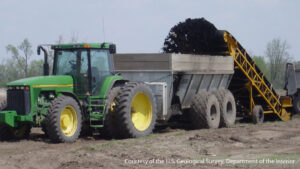Research Projects

Current and Past Research Projects
Assessing Maine Hunters Behavior in the time of PFAS
Sponsor: Maine Inland Fisheries and Wildlife Department (MDIFW)
Team Leaders: Caroline Noblet, Dianne Kopec
This project will assess how the behaviors of Maine hunters may change due to concerns regarding the presence of environmental contaminants such as PFAS in wildlife. The team will survey hunters who hold a Maine hunting license (residents and non-residents) to assess their current knowledge and concerns about contaminants in wildlife, as well as test the effectiveness of messages associated with hunting advisories.
Assessing Maine’s Anglers Preferences for Fish Consumption
Sponsor: Maine Inland Fisheries and Wildlife Department
Team Leaders: Caroline Noblet, Dianne Kopec
This project will assess the fish consumption habits of Maine freshwater anglers, particularly fish consumption rates. This information is considered by the Maine Center of Disease Control in assessing the need and scope of fish consumption advisories and is the impetus for conducting this research survey. Recreational fishing is the primary source of wild freshwater fish in Maine since there are no commercially available wild sources.
Developing and Deploying a Risk Framework for PFAS Management in Rural America
Sponsor: Water Resources Research Institute National Competitive Grants Program (104g), USGS
Team Leaders: Caroline Noblet and David Hart
This project uses an integrated risk framework to quantify and communicate the threat of PFAS (per- and polyfluoroalkyl substances) contamination to the resilience and livelihoods of rural areas. To achieve this goal, the team is implementing a collaborative, integrated, interdisciplinary research project to address three objectives: 1) identify factors that predict PFAS fate and transport near biosolids agricultural application areas to develop vulnerability models for groundwater (GW) resources; 2) determine barriers to scientific information uptake and implementation of management strategies; and 3) provide a research blueprint for replication of the approach to benefit PFAS-impacted rural communities.
Integrated Assessment of Alternative Management Strategies for PFAS-contaminated Wastewater Residuals
Sponsor: Maine Water Resources Water Institute, USGS
Team Leader: Dianne Kopec
Because PFAS chemicals do not break down, they eventually end up in the wastewater streams sent to treatment plants. During treatment, much of the PFAS are removed from the wastewater and become concentrated in the wastewater sludge, or residuals, that remain. In 2019, the state stopped spreading wastewater residuals on farm fields due to the discovery of unsafe levels of PFAS in virtually all samples and PFAS contamination at several Maine dairy farms. The PFAS team is examining the environmental, social and economic consequences of a range of management options for PFAS-contaminated wastewater residuals.
The Emergent Risks of Food Waste Recovery: Technologies for the Proactive Management of Sustainability Transitions
Sponsor: Environmental Research and Education Foundation
Team leader: Jean MacRae
This project involved sampling and testing source-separated food waste for heavy metals, halogenated organics, PFAS, pathogens and antibiotic resistance genes; and surveying waste managers on their perceptions of risk associated with different sources of food waste. Waste managers were more concerned about physical contamination of waste materials than trace contamination. While heavy metals and other halogenated organics were low in our samples, 60% had detectable PFBA, one of the smaller substitute PFAS, at up to 1 ppb, and nearly all samples contained antibiotic resistance genes.
Maine Residents and PFAS – Capturing a Baseline 2022
Team leader: Caroline Nolet
Participating students: Charity Zimmerman, Molly Shea
This project involves a state-wide survey of Maine residents to assess the public’s current PFAS perceptions of risk, understanding of issues, and support or opposition for possible management strategies. Information on barriers to scientific information uptake was also collected.
